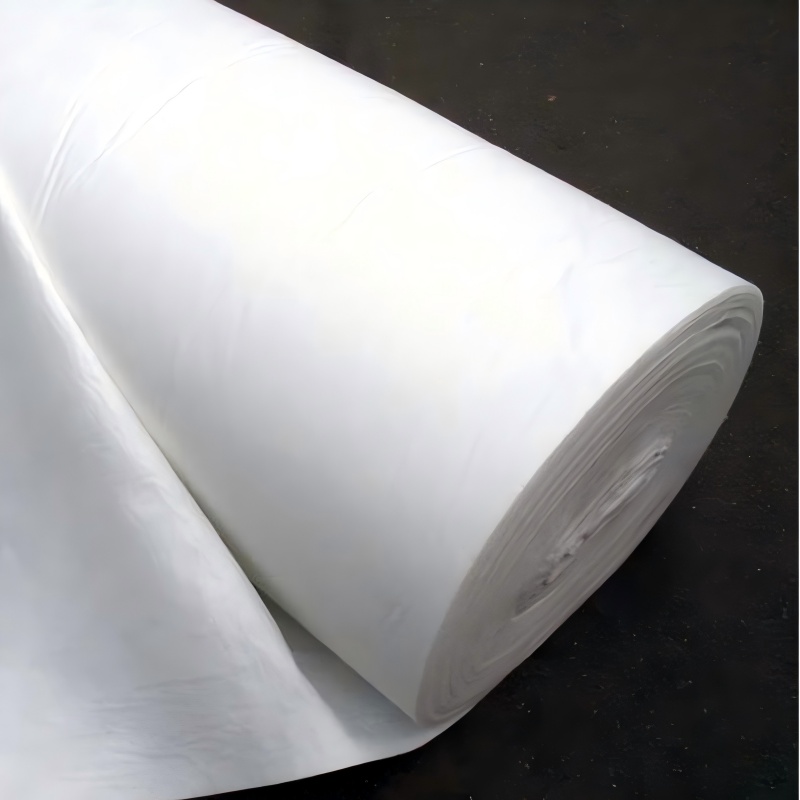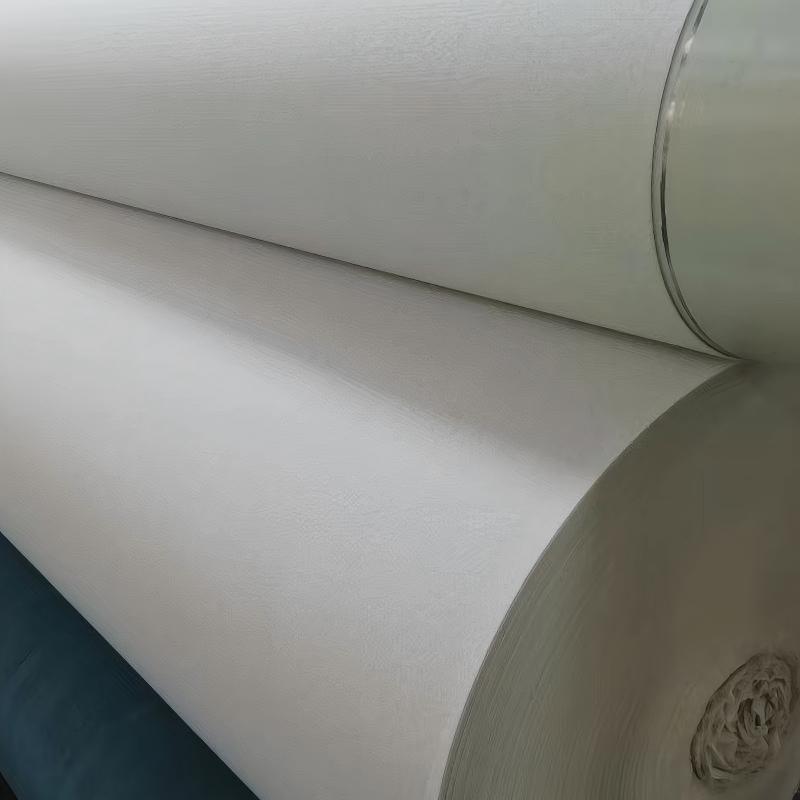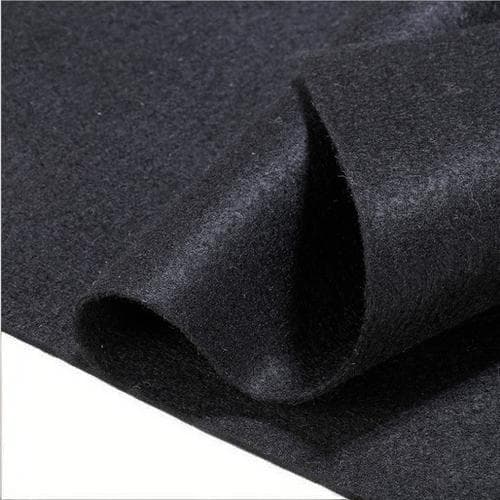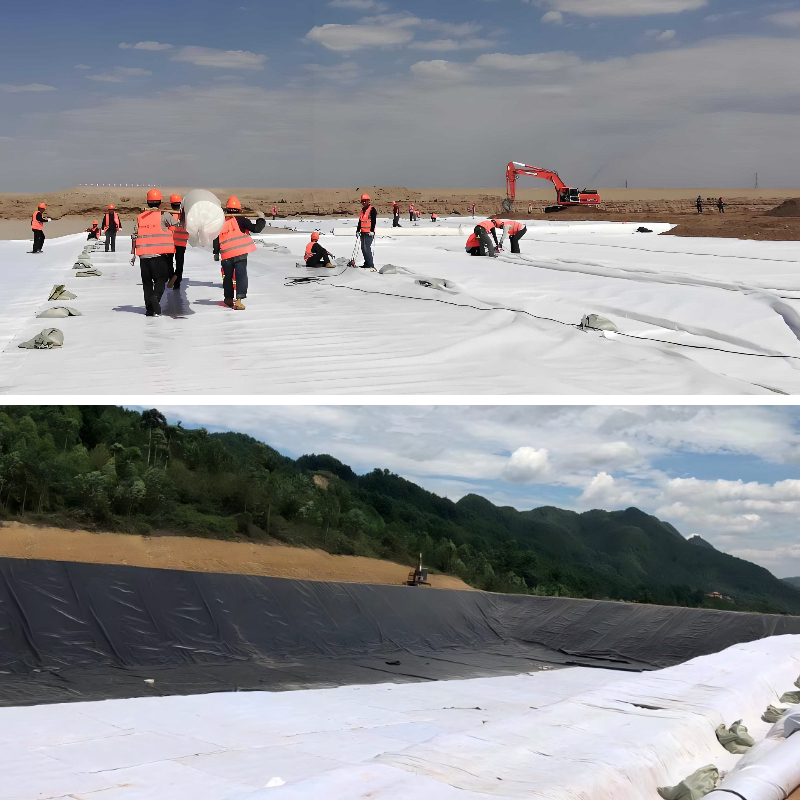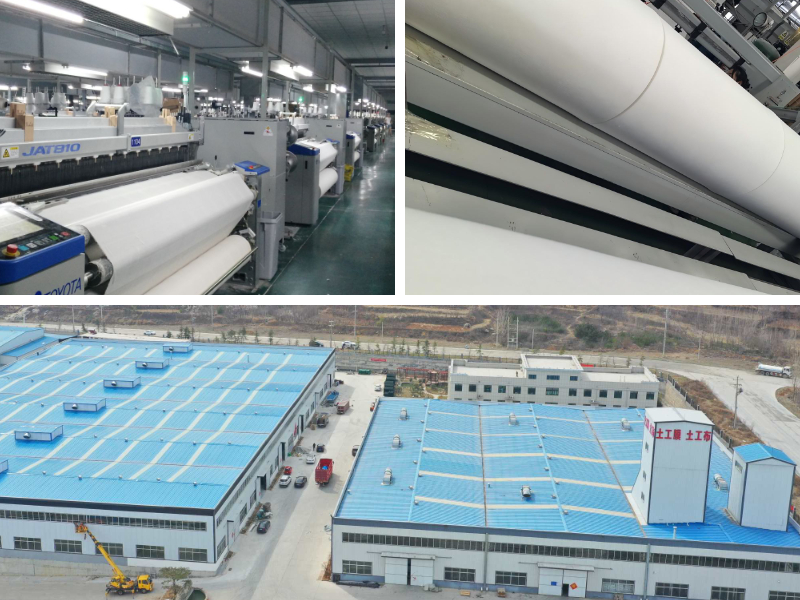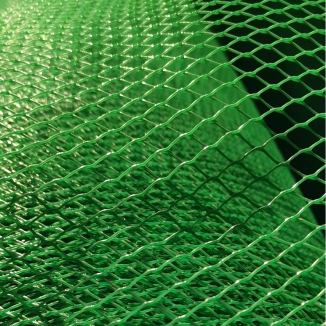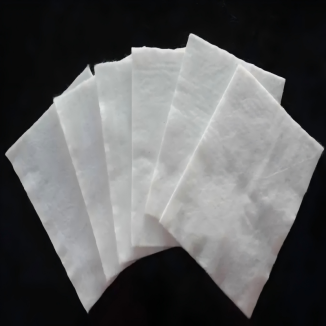Drainage Geotextile Fabric
1. Isolation advantage: Effectively separate soils and materials of different properties, prevent them from mixing with each other, and maintain the integrity and bearing capacity of their respective structures.
2. Filtering advantage: allowing water to pass smoothly while effectively preventing soil particle loss and preventing foundation or slope from being hollowed out.
3. Drainage advantage: Forming drainage channels to quickly collect and discharge excess water from the soil, accelerating soil stability.
4. Reinforcement advantage: By utilizing its own high strength, it disperses soil stress, limits lateral displacement, and significantly improves the overall strength and stability of the soil.
5. Protection advantage: As a buffer layer, it reduces the impact and damage of water flow, waves, or falling rocks on engineering structures .
Product Introduction:
Drainage Geotextile Fabric is a new type of geosynthetic material used in geotechnical engineering. It is made from high molecular weight polymers (such as polypropylene, polyester, polyethylene, etc.) and is a permeable geosynthetic material produced through processes such as spinning, weaving, needle punching, thermal bonding, or chemical bonding. It is not a traditional "fabric", but a functional material specifically designed to solve problems such as filtration, drainage, isolation, and reinforcement in geotechnical engineering. It is one of the most widely used and largest categories in the geosynthetic material family.
Main Features
The characteristics of geotextiles are determined by their polymer materials and special processes, centered around "functionality" and "engineering adaptability", which can be summarized into the following five points:
1. Excellent physical and mechanical properties:
High tensile strength: The tensile strength of woven geotextile can reach 20-100kN/m, which can effectively resist the tensile force generated by soil deformation and meet the reinforcement requirements;
Controllable elongation rate: According to engineering requirements, the elongation rate can be adjusted (usually 5% -30%) to ensure deformation coordination and avoid excessive tensile fracture;
Anti puncture and wear-resistant: The surface fiber structure or interwoven structure can resist punctures from sand, gravel, and sharp objects, extending the service life of the project.
2. Stable chemical corrosion resistance:
Polymer materials such as polypropylene and polyester are inherently resistant to acid and alkali (stable within the pH range of 3-11), salt spray, and microbial erosion. They are not easily aged or decomposed in complex environments such as soil, groundwater, and seawater, and are typically designed to have a service life of over 50 years (depending on the material selection, for example, polyester has better weather resistance than polypropylene).
3. Good permeability and filtration:
The porous structure of non-woven geotextiles (usually with a porosity of 40% -90%) allows water to freely penetrate while blocking soil particles from passing through - this "permeable and impermeable" characteristic is the core of its "filtration" and "drainage" functions, which can prevent soil loss or pipeline blockage.
4. Lightweight and easy to construct:
Geotextile is lightweight (usually 100-800g/㎡), thin in thickness (1-5mm), packaged in rolls (each roll length 50-100m), and has low transportation and handling costs; No complex equipment is required during construction, only splicing (sewing, hot bonding, or overlapping) is needed, which is much more efficient than traditional materials such as sand and gravel filter layers.
5. Strong environmental adaptability:
Excellent resistance to high and low temperatures, capable of working normally in environments ranging from -40 ℃ to 80 ℃, suitable for extreme climates such as cold and high temperature regions; At the same time, some geotextiles can be recycled or slowly degraded in natural environments (such as bio based geotextiles), which is environmentally friendly.
Product Parameters:
project | metric | ||||||||||
Nominal strength/(kN/m) | |||||||||||
6 | 9 | 12 | 18 | 24 | 30 | 36 | 48 | 54 | |||
1 | Longitudinal and transverse tensile strength / (kN/m) ≥ | 6 | 9 | 12 | 18 | 24 | 30 | 36 | 48 | 54 | |
2 | Maximum elongation at maximum load in longitudinal and transverse directions/% | 30~80 | |||||||||
3 | CBR top penetration strength /kN ≥ | 0.9 | 1.6 | 1.9 | 2.9 | 3.9 | 5.3 | 6.4 | 7.9 | 8.5 | |
4 | Longitudinal and transverse tearing strength /kN | 0.15 | 0.22 | 0.29 | 0.43 | 0.57 | 0.71 | 0.83 | 1.1 | 1.25 | |
5 | Equivalent aperture O.90(O95)/mm | 0.05~0.30 | |||||||||
6 | Vertical permeability coefficient/(cm/s) | K× (10-¹~10-), where K=1.0~9.9 | |||||||||
7 | Width deviation rate /% ≥ | -0.5 | |||||||||
8 | Unit area mass deviation rate /% ≥ | -5 | |||||||||
9 | Thickness deviation rate /% ≥ | -10 | |||||||||
10 | Thickness coefficient of variation (CV)/% ≤ | 10 | |||||||||
11 | Dynamic perforation | Puncture hole diameter/mm ≤ | 37 | 33 | 27 | 20 | 17 | 14 | 11 | 9 | 7 |
12 | Longitudinal and transverse fracture strength (grab method)/kN ≥ | 0.3 | 0.5 | 0.7 | 1.1 | 1.4 | 1.9 | 2.4 | 3 | 3.5 | |
13 | Ultraviolet resistance (Xenon arc lamp method) | Longitudinal and transverse strength retention rate% ≥ | 70 | ||||||||
14 | Ultraviolet resistance (fluorescence UV lamp method) | Longitudinal and transverse strength retention rate% ≥ | 80 | ||||||||
Product Applications:
1. Highway and railway engineering
Roadbed isolation: Lay geotextile between the roadbed fill and the foundation (such as soft soil and sand layer) to prevent soil particles from penetrating each other (to avoid roadbed settlement), while draining the accumulated water in the foundation to improve roadbed stability;
Pavement reinforcement: Textile geotextile is laid in the base layer of asphalt or cement pavement to enhance the tensile strength of the pavement and reduce cracks (such as reflection cracks);
Slope protection: Laying geotextile (often combined with vegetation) on highway slopes to prevent soil erosion caused by rainwater erosion and protect the slope soil.
2. Water conservancy and waterway engineering
Dam filtration and drainage: Non woven geotextile is laid on the upstream or downstream slope of the dam to filter out sediment in the water and prevent dam "piping" (water flow carrying away soil particles from the dam body, leading to dam collapse); Simultaneously discharge the accumulated water inside the dam body and lower the infiltration line of the dam body;
River regulation: laying geotextile at the bottom or slope of the river to protect the soil of the riverbed from being washed away by water flow, and using geotextile membrane to achieve anti-seepage (such as landscape rivers);
Port terminal: Lay geotextile in the foundation of the terminal yard, isolate the sand and gravel cushion layer from the soft soil foundation, and improve the bearing capacity of the yard.
3. Construction and Municipal Engineering
Underground garage roof drainage: Lay geotextile above the waterproof layer of the roof and form a drainage layer with the drainage board to drain rainwater and prevent roof leakage;
Landfill site: as the "filter layer" and "protective layer" of the landfill site - laying geotextile around the leachate collection pipe to filter impurities in the leachate and prevent pipeline blockage; Simultaneously laying geotextile between the bottom of the landfill site and the soil to protect groundwater from pollution;
Excavation support: Lay geotextile under the sprayed concrete layer of the excavation slope to prevent soil loss after concrete cracking and enhance support stability.
4. Environmental Protection and Ecological Engineering
Soil and Water Conservation: Laying geotextile on the slopes of mine reclamation and barren mountain greening to fix the soil and provide a stable environment for vegetation growth (ecological slope protection mode of "geotextile+vegetation");
Wastewater treatment: laying geotextiles between the filling layers (such as gravel and soil) of artificial wetlands to filter suspended solids in wastewater and improve wastewater treatment efficiency;
Agricultural water conservancy: Lay geotextile on the slope of irrigation channels to prevent channel erosion and collapse, and reduce water resource leakage.
5. Special Engineering
Tunnel engineering: Lay geotextile between the secondary lining and initial support (anchor spraying) of the tunnel as a "buffer layer for the waterproof board" to prevent the waterproof board from being pierced by sharp rocks;
Airport runway: Lay geotextile between the runway base and foundation to isolate different soil layers and reduce runway settlement and cracks.
Geotextile, as a multifunctional, efficient, and economical geosynthetic material, has become an indispensable core material in modern geotechnical engineering. Its core value lies in solving the pain points of "filtration, drainage, isolation, and reinforcement" in traditional engineering through "material innovation", while reducing engineering costs, shortening construction periods, and improving durability. With the increasing environmental requirements and technological advancements, new products such as bio based geotextiles and intelligent monitoring geotextiles (integrated sensors) will further expand their application boundaries in the future.


